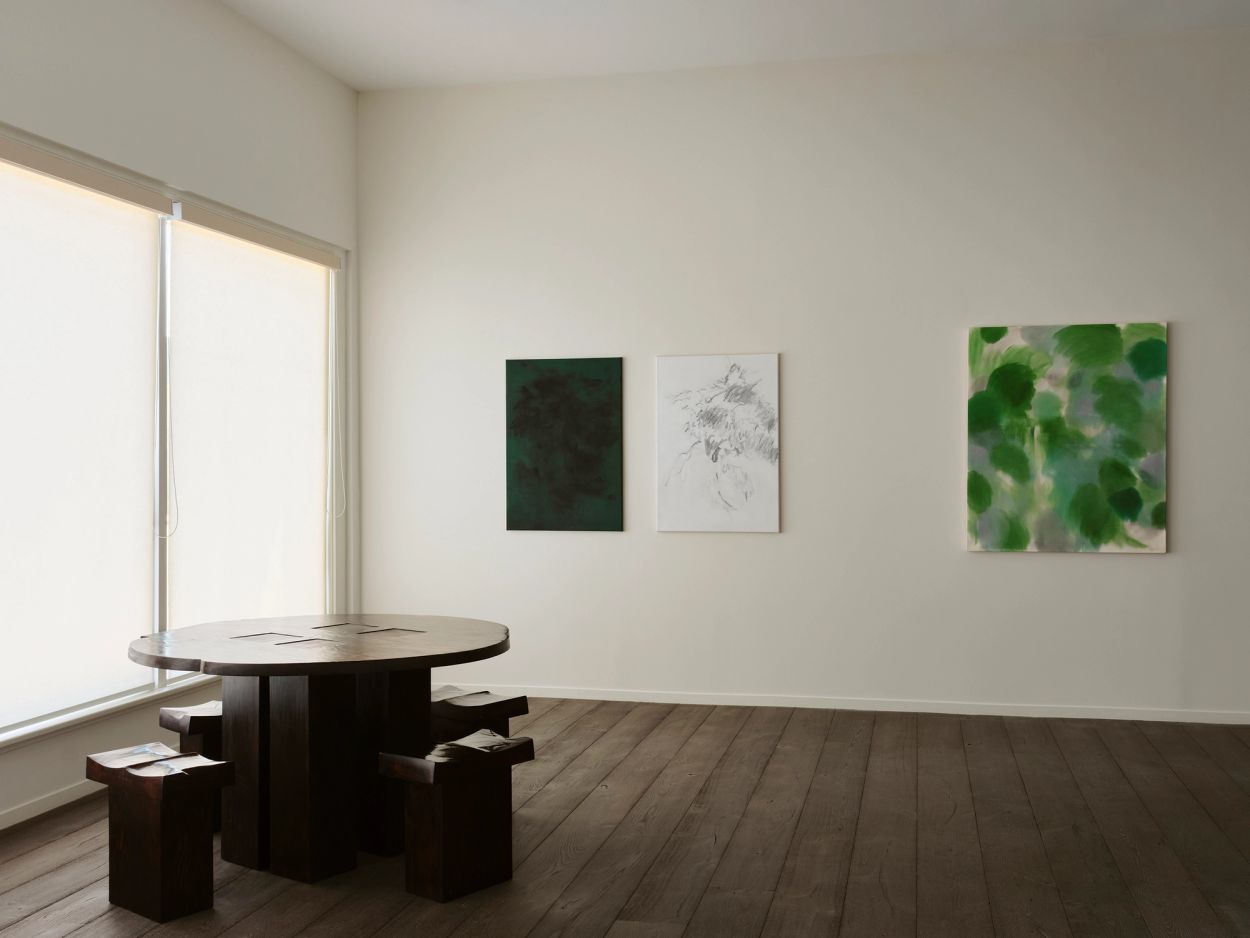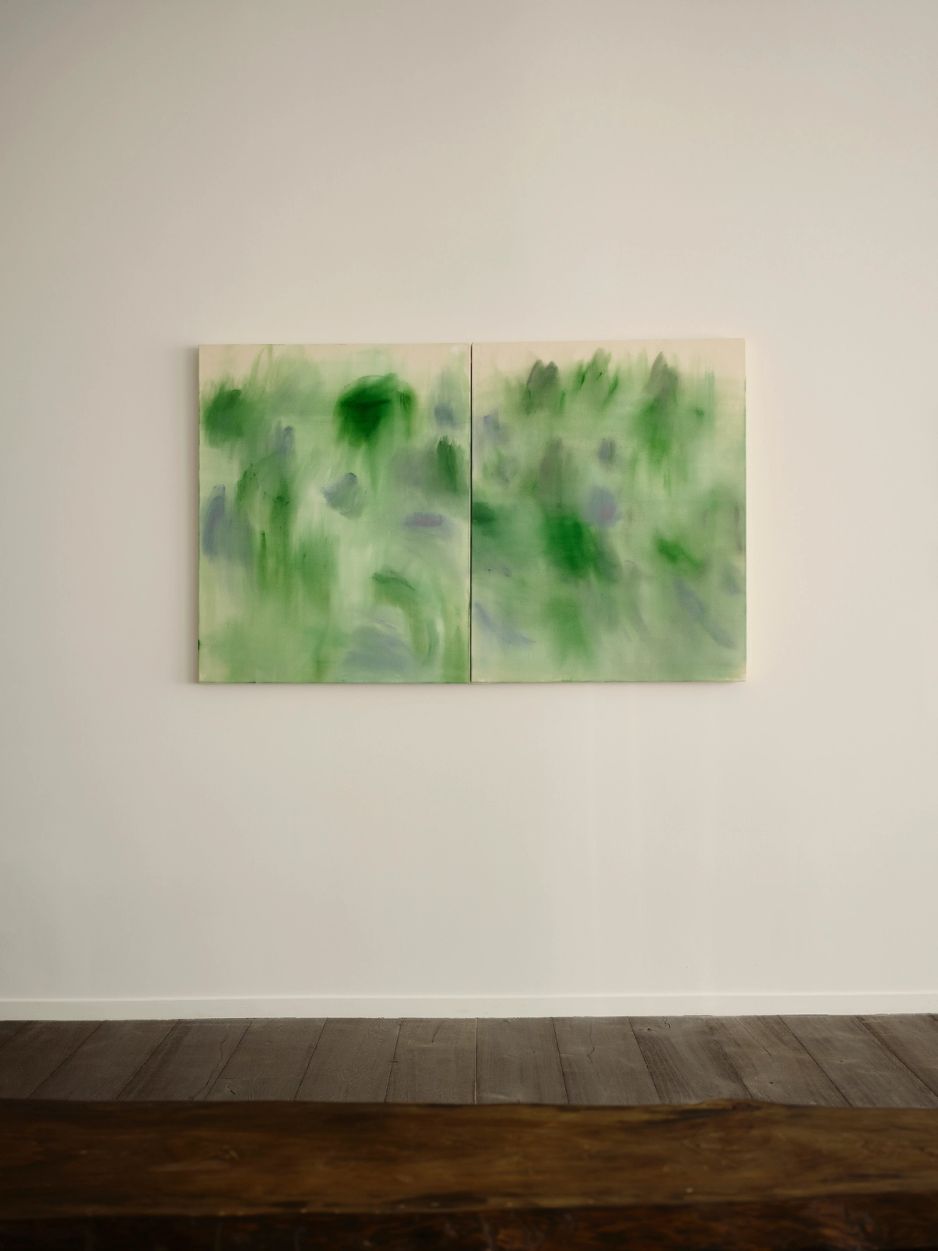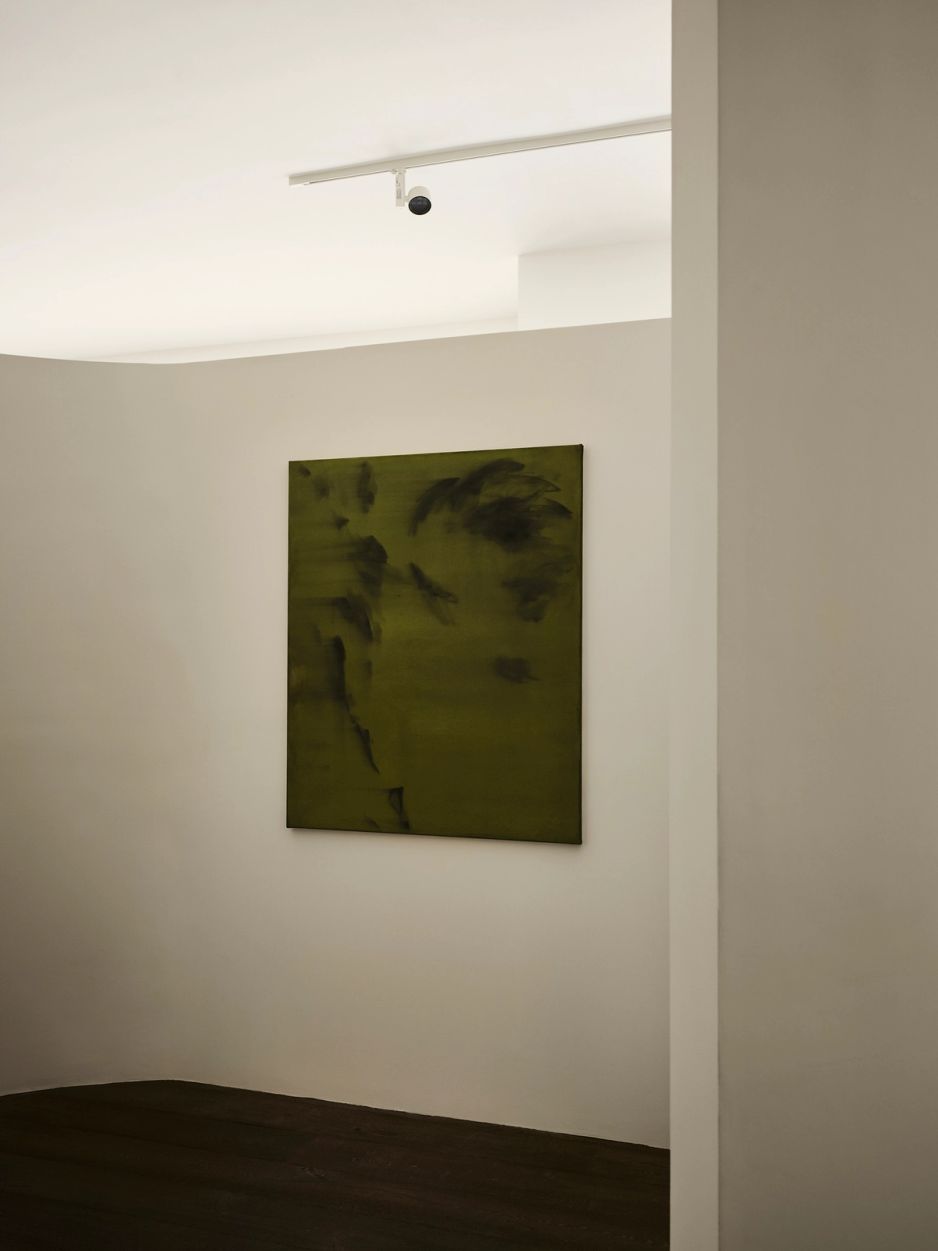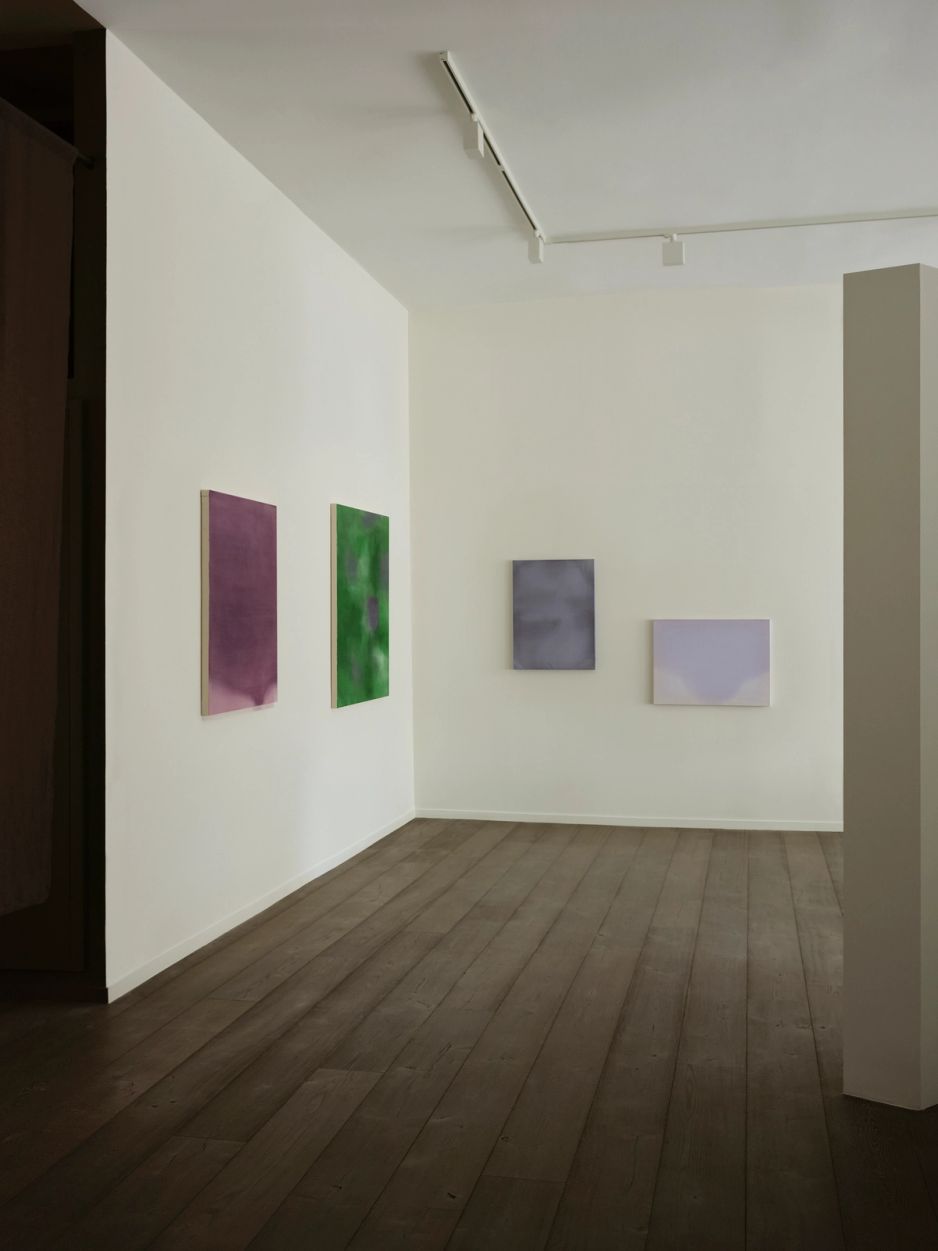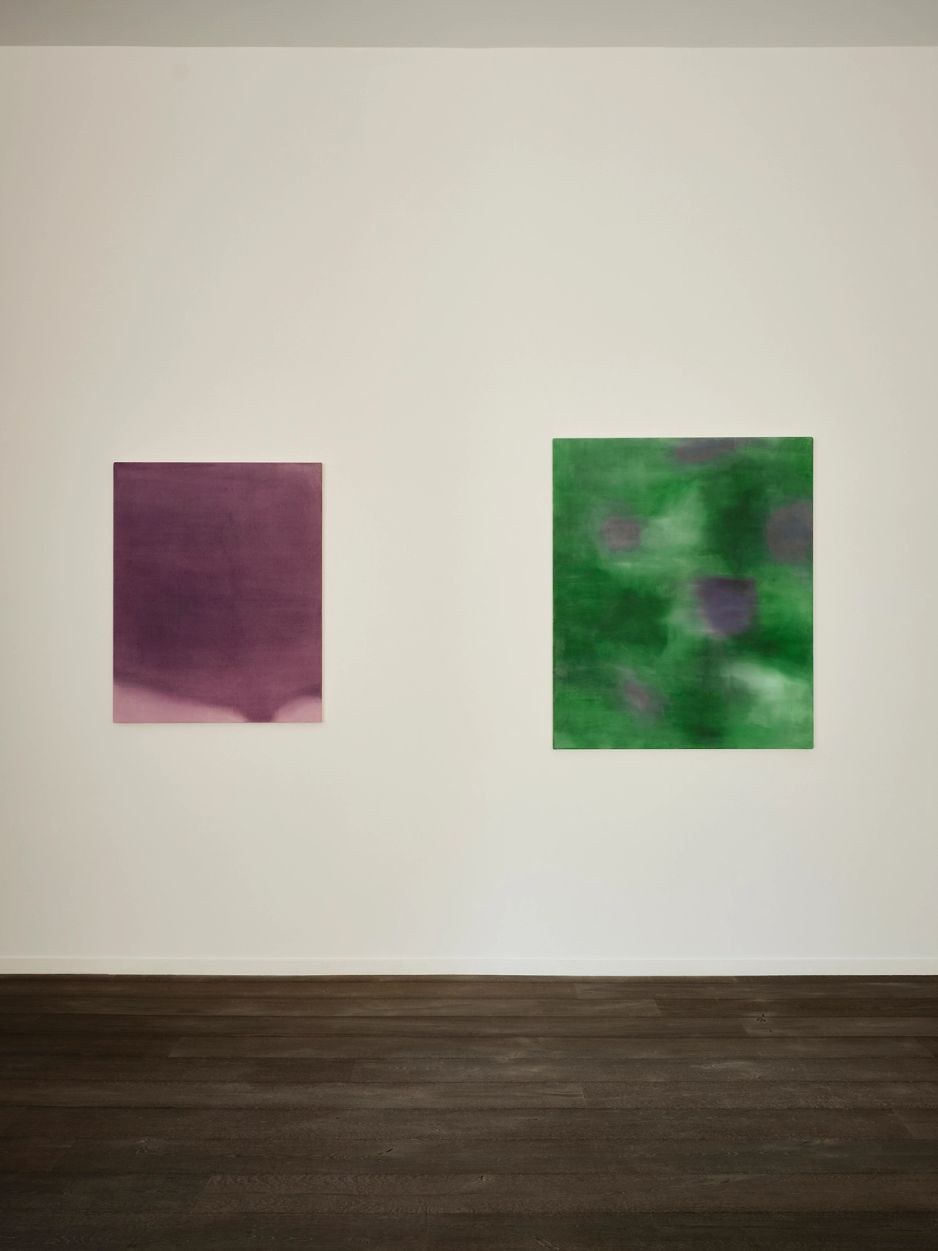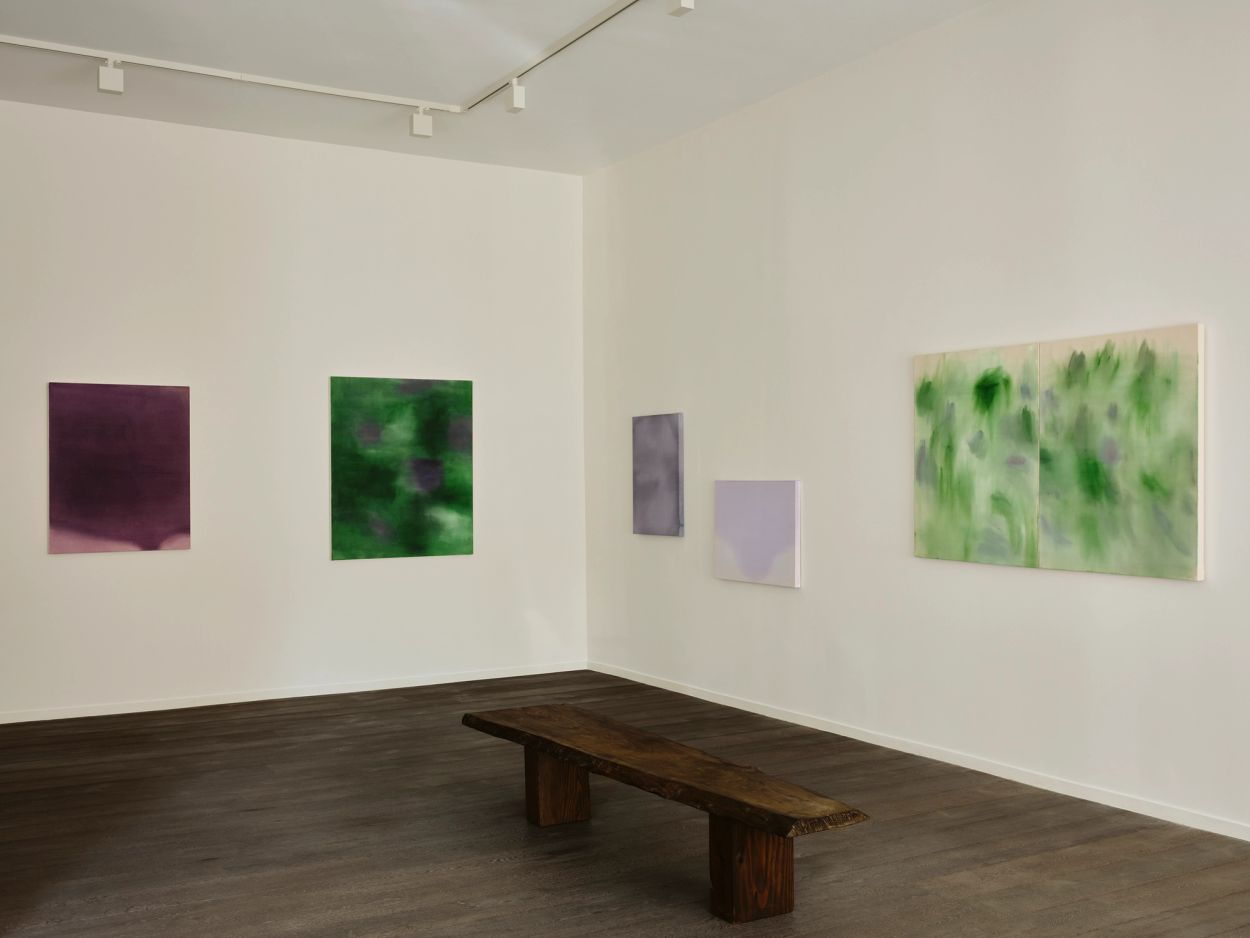Nicky Hodge: Notes from ElsewhereJul 24 – Sep 20, 2025
Indigo voyager, you lift above green, travel in horizontal time, with silent messages. Deep green grows behind you, smudged over a paler green. The gaps between are soothing, not anxious, as ideas seem to float past. Emissary (2025), like many of Nicky Hodges’ paintings is quiet, but it is not easy. It has activity within the quietude; a thinking mind behind a calm face. And don’t we seek both – the beauty and tranquillity of abstraction that frees us from the tyranny of representation, and yet also the sense that something is yearning to be represented at the edge of the image – or no – from within it.
Hodge plays the friction between reduction and amplification in these beautifully introvert paintings and drawings, where substance is layered up, taken away, ‘pushing,’ as Richard Tuttle says, ‘the indefinable toward indefinability.’ (1)
In Umbrage (2025), energetic marks point upwards, mimicking verdant growth, where you could imagine the misty pinnacles of the Three Gorges of the Yellow River, or at the other end of the scale, first feisty shoots in a shaded spring. The eye loves green best, knows it means sustenance, tries to pin it to plant-life, food-lore. There is no right way to enter a painting, but there is a benign texture to the hues and gestures, a soft slow meander that invites you in. The painting’s open provisionality brings to mind the experimental work of Irish poet Eilish Martin:
‘, asis
scattered light
, asis
the daytime dress
, asis
its pulled material
, asis
its deep detail going
, asis
into the seed-set night’(2)
The lyrical buoyancy of Prufrock (2025), counters the unfulfilled and worried world of the protagonist of T.S. Eliot’s poem, ‘The Love Song of Alfred J. Prufrock’ that it invokes. Here, Hodge scores acrylic like crayon or oil pastel, rendering the gestures playful and filled with childlike exuberance. What draws the artist more is perhaps the question in Eliot’s poem which sits at the core of much creative work:
‘Do I dare
Disturb the universe?
In a minute there is time
For decisions and revisions which a minute will reverse.’ (3)
Or maybe Hodge is more interested in invoking the shift at the end of the poem when the narrator says:
‘I have heard the mermaids singing, each to each.
I do not think that they will sing to me.’ (4)
But surely they do sing to her and this painting seems to sing with an impatient happiness.
To be marooned can be a pitiful or a longed-for state: to be beyond reach, caught in stasis, inertia perhaps, a state that can induce panic, fear or loneliness on one hand, or deep contentment and welcome solitude on the other. Once, to be marooned, was to find safety. Coined in the 17th century, to name escaped slaves, or maroons, who often hid in remote, uninhabited places, the roots lie in the Spanish word ‘cimarrón’, meaning feral animal.Imagine my surprised delight to also discover that the word may also derive from the Taíno word ‘símaran’ meaning ‘stray arrow’ and is used to describe those who defy social norms, like artists, like queers. The multiple meanings stretch back into early colonial forms of the word’s usage and blossom in current use. The purple ambiguities of Hodge’s Marooned (2025), fascinate. If you can find a face, it is your own.
It's human nature to follow a dip between two hills as a river would. In both Fever Rings (2024) and A Muse (2024), the gaze sinks into the gap at the base of the paintings. Whether suggestive of a landscape or a body’s opening, it’s where adventure and pleasure can be found, or indeed comfort and sleep. The paintings take you by the hand and lead the way. Is the valley death, the end of all fevers? Is the muse asking for complete surrender in the whitish hollow beneath a lilac ground? Each offers a sweet indeterminacy of focus and form, the mulling over of an idea or a presence, where change, perhaps transcendent, dwells.
Trackless Forest (2025), presents a choreography of grey and green light and motion. Is it chosen movement or fleeing displacement? Or simply leaves falling in nature’s rhythm, a reconciliation with flux? There’s nothing to fear in this pathlessness, where resilience could deliver the deep wisdom of aimlessness, one of the Three Doors of Liberation in Buddhist philosophy. Here the clarity of direction resides in the present moment, or as Tuttle puts it, ‘the pointless point’. (5)
In Hodge’s sturdy and agile drawings, we see a similar assured quality of mark-making, the shuttling between levity and gravity, solidity and frailty. Is that why her work is so moving? It captures our ambivalences, our dualities, and our sore attempts to reach beyond them. This is immediate, sensuous and vulnerable work that takes you to thinking places.
—
(1) Richard Tuttle from a lecture at Harvard School of Design, October 13, 2015
(2) Eilish Martin, from ?And what…if not, Macha Press: Belfast, 2024
(3) T.S. Eliot, from ‘The Love Song of Alfred J. Prufrock’, first published 1915
(4) ibid.
(5) Tuttle, ibid.
Words
- Cherry Smyth
Photos
- Elizabeth Carababas
Featured works
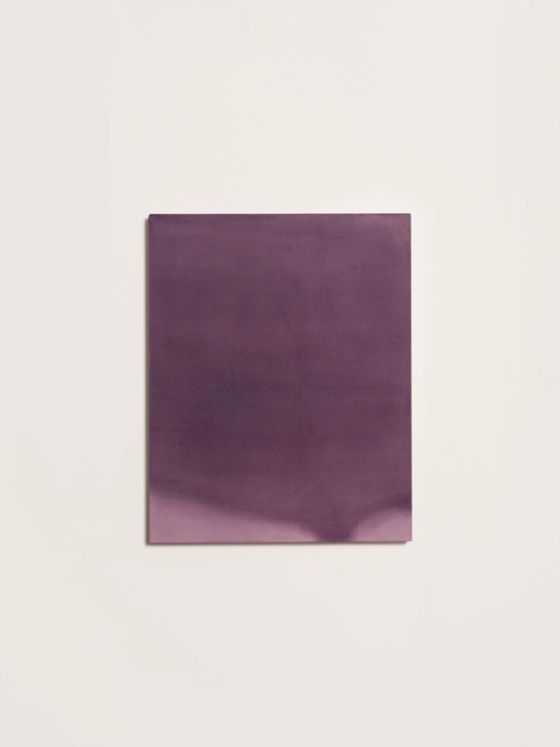
 LA Gallery
LA GalleryNicky HodgeFever Rings, 2024
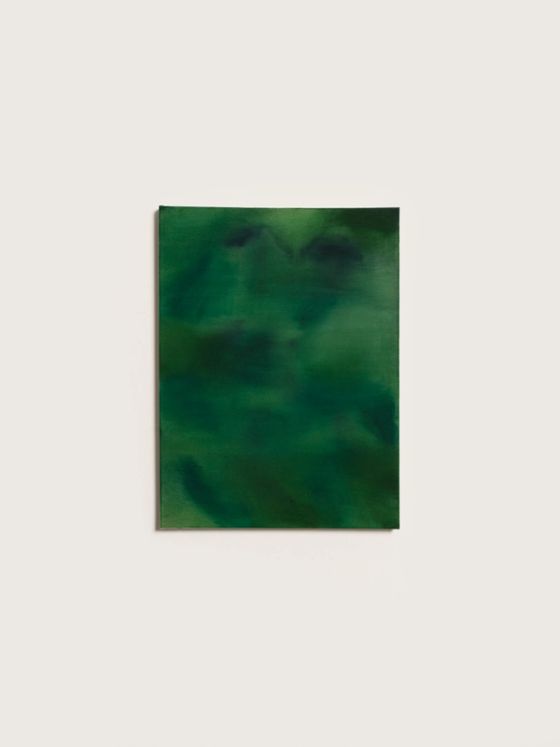
 LA Gallery
LA GalleryNicky HodgeGreco, 2024
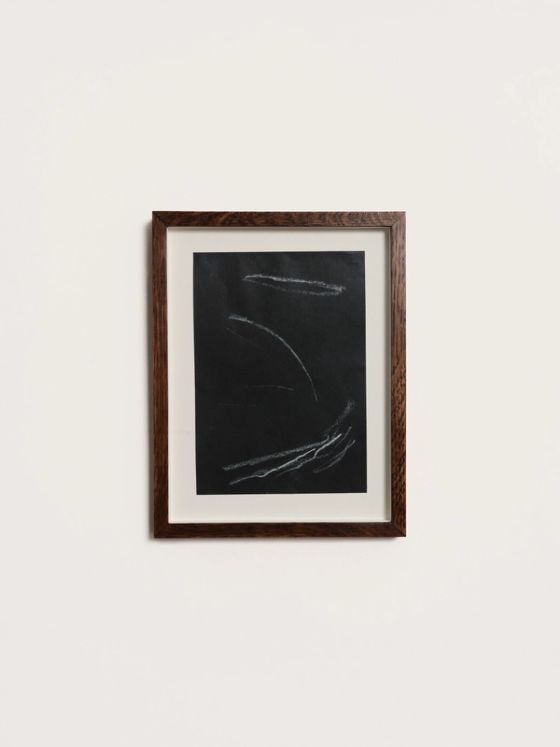
 LA Gallery
LA GalleryNicky HodgeBright Scallops 24, 2025
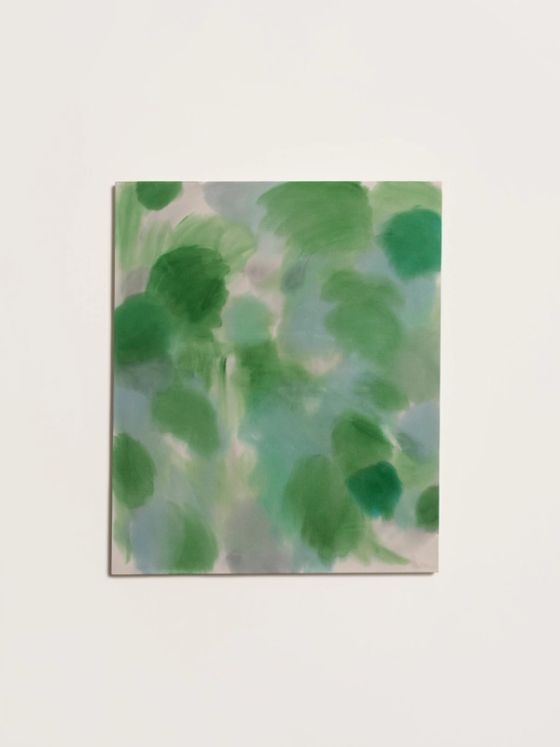
 LA Gallery
LA GalleryNicky HodgePrufrock, 2025
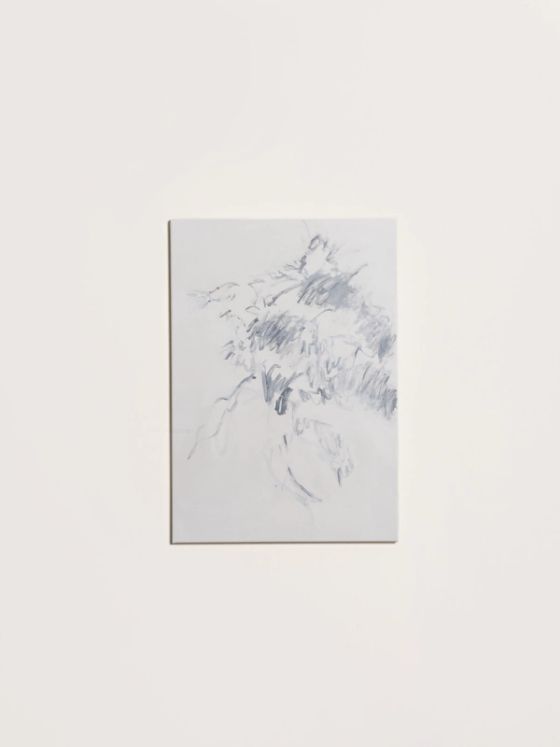
 LA Gallery
LA GalleryNicky HodgeBarefoot, 2024

 LA Gallery
LA GalleryNicky HodgeBright Scallops 25, 2025

 LA Gallery
LA GalleryNicky HodgeLossy, 2025
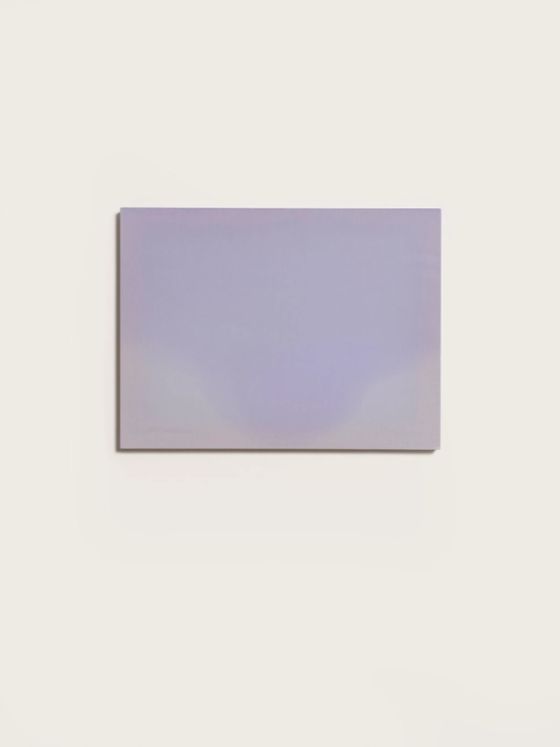
 LA Gallery
LA GalleryNicky HodgeA Muse, 2024

Hodge creates her abstract paintings and drawings with immediacy and intuition, working quickly and performatively to make sweeping, gestural marks. Using acrylic diluted with water on raw, untreated canvas, she often softens the surface with a brush, blurring calligraphic gestures into ethereal forms.
Related exhibitions
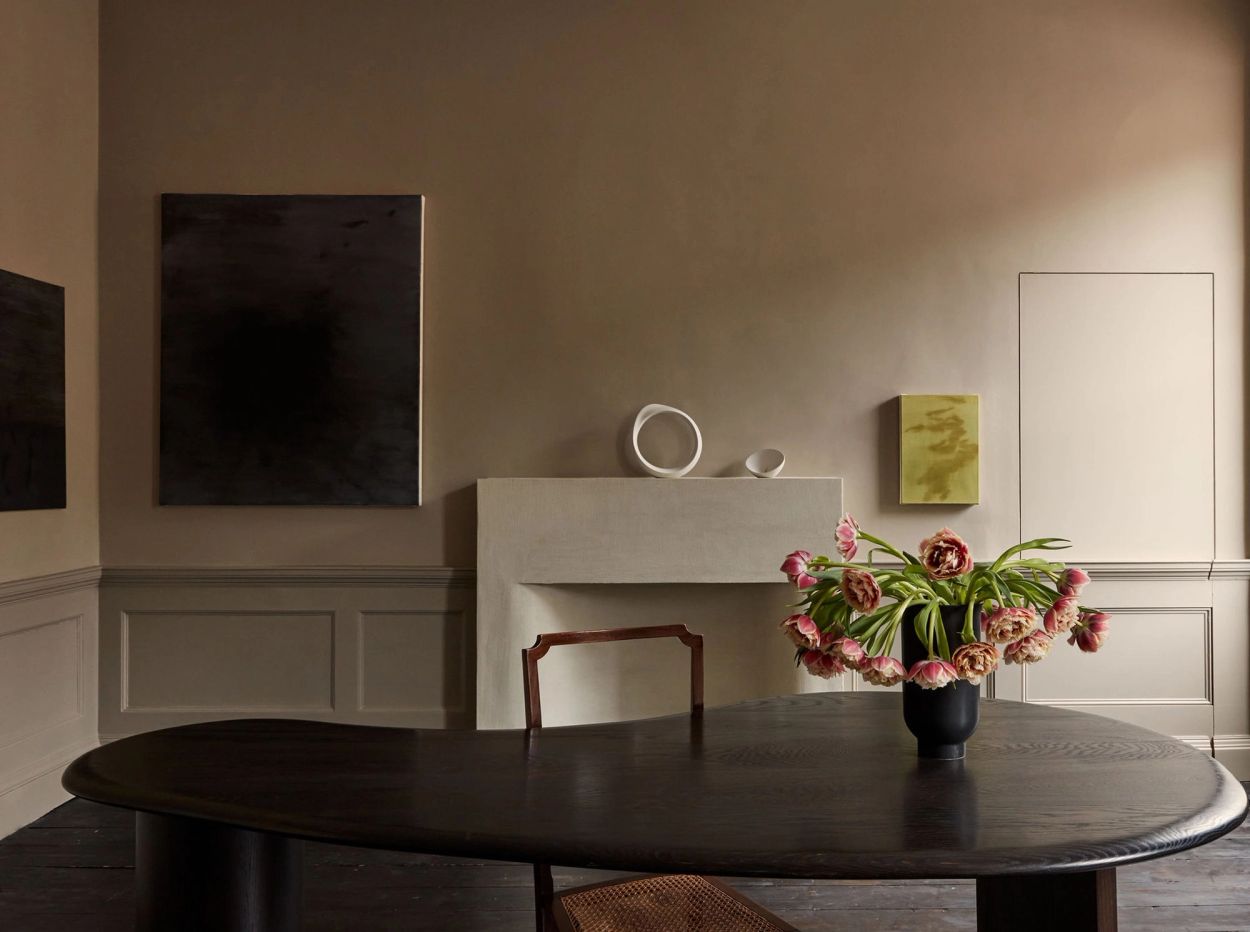 Bath Gallery
Bath GalleryNicky Hodge: Slip RoadMay 13 – Jul 29, 2023
In Slip Road, Nicky Hodge continues to explore her individual practice of 30 years. Composed at the start of 2023, these paintings result from an intense period of productivity: the canvases were completed energetically, one after another, each one flowing into the next in a state of meditative flow. “Time is important to the work,” says Hodge. “The sequence in which the paintings are made creates a narrative, as the works form relationships between each other and the group as a whole.”
 Bath Gallery
Bath GalleryNicky Hodge: Touch PaperJul 26 – Aug 23, 2025
Artist Statement: I've always found it difficult to distinguish between a painting and a drawing. I’m drawn to making paintings that use marks in an instinctive, spontaneous way, allowing a brush to go into free fall across the surface of the canvas. Equally, I make drawings that use immediate, expressive marks – a rapid, effortless process that can sometimes only take a few minutes to complete. The media or surfaces the drawings are made on is largely immaterial. What counts is the energy that is apparent in these gestural works – the sense of a line taking itself for a walk (to use Klee’s famous phrase) and the emotional direction this may lead you in.
